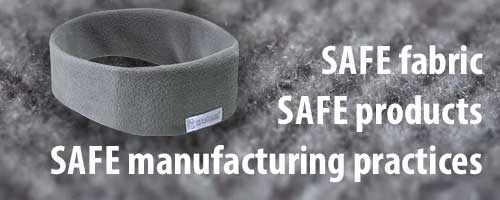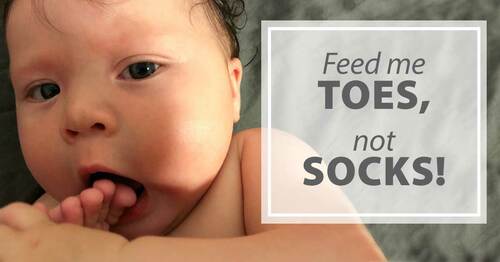Exposure to BPA in Clothes

Recently BPA (Bisphenol A) was in the news after being found in baby socks and that the average American is exposed to 5,000 times the level now considered safe by the European Union. A concerned SleepPhones customer wrote in to ask about BPA levels for the SleepPhones headbands so we explored this issue further.
A report from OEKO-TEX, an agency that sets standards for fabric, released a report about socks with polyester content having 19 times the amount of BPA considered acceptable by the State of California. California has the most stringent standards in the US. You have probably seen the Prop 65 Warnings saying, "This product contains chemicals known to the State of California to cause cancer and birth defects or other reproductive harm." All manufacturers selling into California would need to label their products with warnings if required. In many ways, California's standards help protect the rest of the US against many potentially harmful chemicals - or at least informs us of the possibility.
California's standards rival those of the European Union. Many products sold in the European Union have to pass a number of tests to gain the CE mark. A CE mark certifies Conformity to European standards. They also have a list of dangerous chemicals to avoid. All SleepPhones headphones pass CE testing and do not trigger any special warnings in the State of California.
In designing and manufacturing SleepPhones, we deliberately work with the highest quality suppliers who follow ISO manufacturing standards. ISO is an International Standards Organization for various processes, including manufacturing. We visit all of our supplier factories to ensure that they adhere to the best practices in their respective industries. We speak weekly to a retired ISO auditor and our main suppliers. Then we test our products to ensure they indeed contain no harmful chemicals or can withstand long-term routine usage and expected abuse situations without becoming dangerous. We have demonstrated a strong safety record with the millions of SleepPhones and RunPhones headphones out there - some for nearly 15 years.
Back to the BPA discussion. BPA looks like this.

BPA is primarily fat-soluble and does not leach out easily in water. Ingestion of foods contaminated with BPA (from can linings, plastic water bottles, microwaveable meals, and take-out packaging) will introduce far more of the chemical than absorption through the skin. That said, fabric that exceeds acceptable BPA levels is of particular concern in infants who may chew on their clothes, such as socks, and ingest small micro plastic fibers. BPA is a chemical that may be added to reduce static, increase wicking properties, fix color dyes, and increase fabric lifespan. Some flame retardant fabrics also contain BPA.
The problem with BPA is that it resembles the estrogen hormone and can bind to some hormone receptors in our bodies, triggering a cascade of unintended processes. Even small amounts of BPA can impact health, including immune system T-cell changes, diabetes, male infertility, asthma, and development in children. While the FDA has not set strict standards for it in the US, they did decide to ban BPA in baby bottles and pacifiers in 2012. Babies have the most to lose over the course of their lives from the harmful effects of BPA exposure. The EU is considering new standards, lowering the acceptable amount to 0.04 nanograms per kilogram of body weight per day based on the latest research. While there may be permanent changes from the hormonal disruption, the good news is that the body gets rid of it within a few days. Reducing BPA intake has a quick impact.

As responsible manufacturers and parents, we care deeply about the environment and health. We are are committed to constantly improving our products to minimize environmental impacts. Even though clothing, socks, fabric, and other textiles do not require a CE mark or testing in California, we go above and beyond to ensure not only safe products but also safe manufacturing practices that minimize environmental impact. Our fabric supplier routinely tests for a long list of chemicals of concern to the European Union, including BPA. The reports show that all concerning chemicals were undetectable. Rest assured that our SleepPhones headphones are very safe chemically in the fabric and in the electronics. But please don't eat them!
Dr. Lai
Tips for avoiding BPA
- Canned products are usually coated with a layer of epoxy that may contain BPA.
- Canned oils (vegetable oil, coconut cream) have the highest levels of BPA. As a step up, choose oils packaged in plastic bottles. Glass bottles are definitely best for oils.
- Canned meats and seafood have high levels of BPA. Fresh or frozen meats and seafood are best.
- Canned dairy products have high levels of BPA. Long-lasting dairy products in paper Tetra Paks are better, but fresh is best.
- Canned vegetables have moderate levels of BPA. Consider frozen vegetables instead of canned.
- Soft drinks have low levels of BPA.
- Microwavable meal plastic containers may contain BPA.
- Takeout containers may contain BPA. Reheating them or reusing them after they have been scratched up to store food should be avoided. Consider transferring the food to a ceramic plate.
